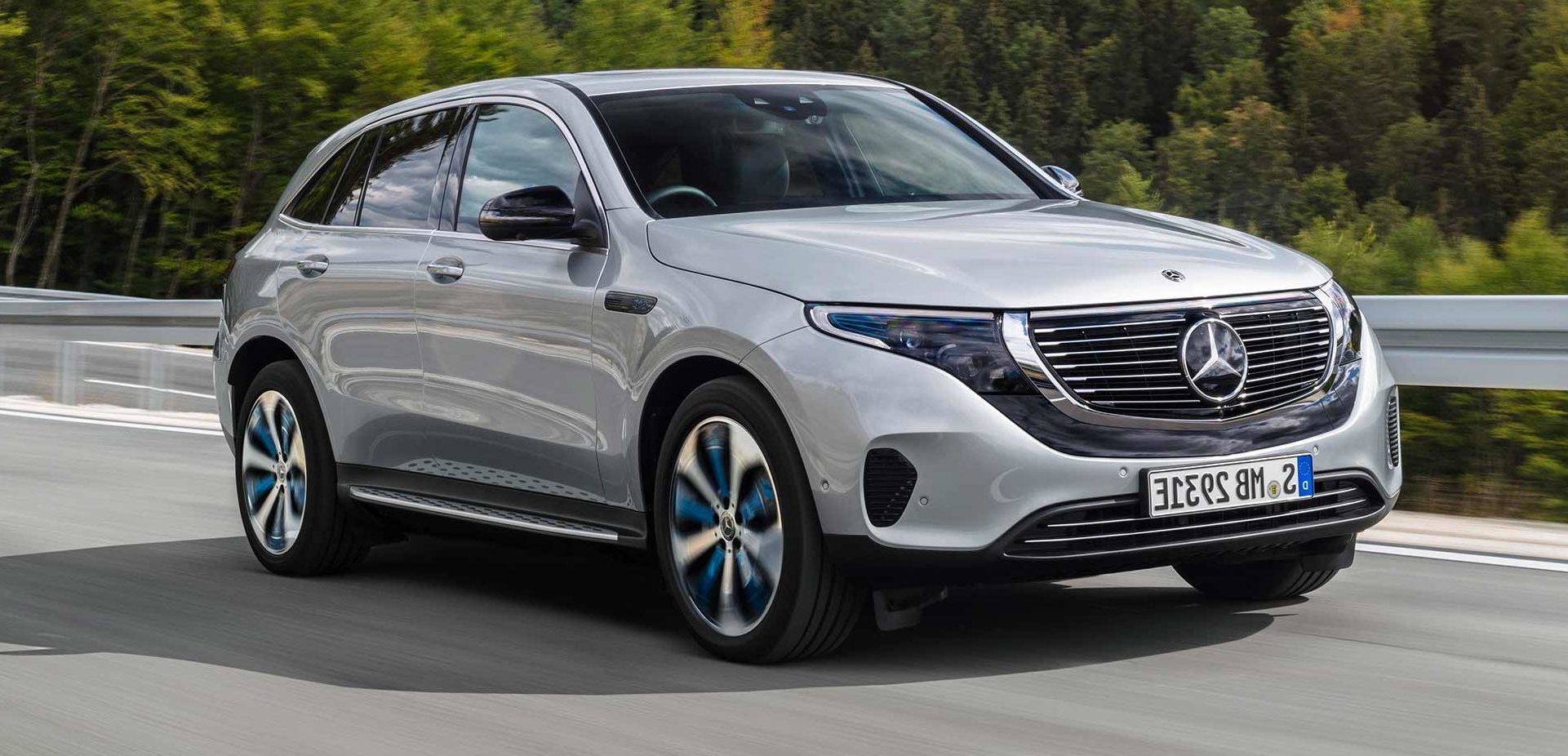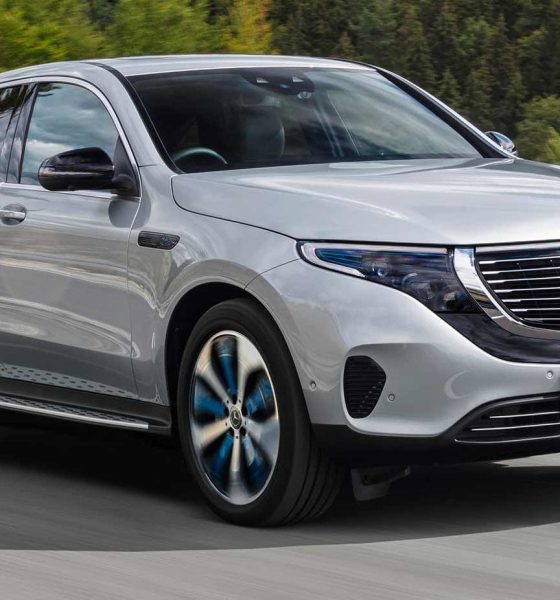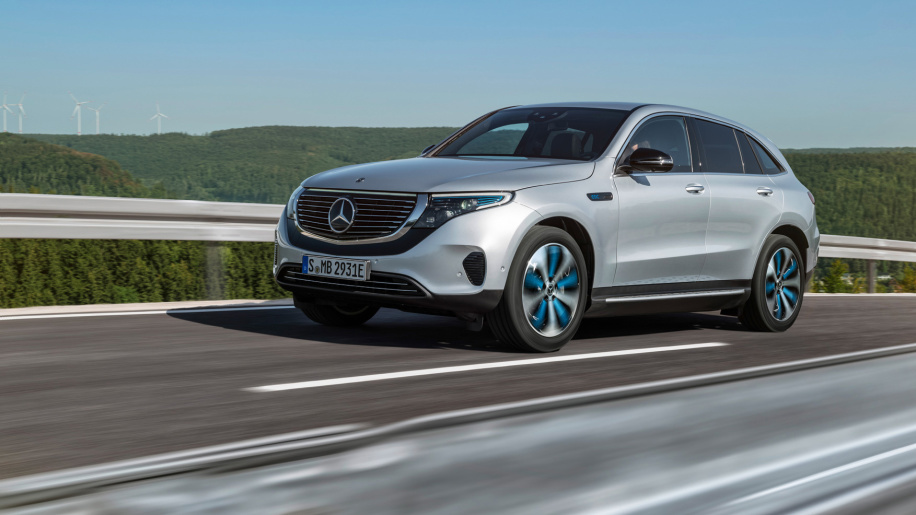

News
Tesla rival Mercedes-Benz EQC to adopt gradual production ramp over possible warranty concerns
Tesla rival Mercedes-Benz has decided to adopt a gradual rollout for the EQC, the company’s first all-electric vehicle that’s designed to compete with premium SUVs like the Model X. Mercedes-Benz head of production and supply chain management Markus Schaefer related the EQC’s production ramp update last week.
Schaefer noted in a statement to Europe Auto News that the German automaker is opting to play it safe with the EQC’s rollout to make sure that warranty costs for the upcoming vehicle don’t spike. The Mercedes-Benz executive added that his main concern lies in monitoring the EQC’s costly, 80-kWh lithium-ion battery pack.
“We want to be sure we deliver Mercedes quality from day one in all aspects, and we have to watch the warranty side for customers as well. We don’t want customers ending up at the mechanic later. Slowing down the ramp-up is a tool to make sure we do it right, to address all the unknowns that an electric car brings,” Schaefer said.
So far, there have been no problems emerging from the EQC’s battery pack plant in Kamenz, Germany, with all component manufacturers being carefully vetted by the company. That being said, Mercedes-Benz acknowledges that building a new type of vehicle at scale could become more challenging than expected, considering the new technology involved and a series of new suppliers. Thus, for Schaefer, it would be best to prepare for any possible problems with the EQC’s battery.
“This is the heart of the electric vehicle, which is very much in charge of safety and performance of the vehicle as well as long life and costs. There are hundreds of components that have to come together from various new suppliers, Tier 2 and Tier 3, which are in the background, and we have to see their performance,” he said.
While the Mercedes-Benz EQC would see a gradual rollout when it starts production, Schaefer maintains that he is nonetheless optimistic about the company’s capability to quickly ramp the vehicle. The company plans to manufacture the EQC at its factories in Bremen, Germany, and Beijing, China, on the same line as the company’s fossil fuel-powered vehicles like the Mercedes-Benz GLC.

“I’m not worried about the production plants in Bremen and Beijing. I know their capability, and they have proven they can ramp up in lightning speed,” Schaefer said.
The Mercedes-Benz EQC is expected to be among the vehicles that would compete with Tesla in the premium EV market. The SUV was unveiled last week, and during the event, Daimler AG Chief Executive Officer Dieter Zetsche stated that the legacy carmaker would be “going all-in” on the emerging electric car transition. Zetsche also noted that its first all-electric car, the EQC, would “offer the best package” compared to rivals.
The Mercedes-Benz EQC is equipped with two electric motors that produce 402 hp and 564 lb-ft of torque, which allows the EQC to accelerate from a dead stop to 60 mph in 4.9 seconds. The EQC also has a top speed of 112 mph. Mercedes-Benz courted some confusion when it unveiled the EQC, as some of the company’s press materials listed the vehicle’s range from its 80-kWh battery as ~200 miles per charge, but in a later statement to The Verge, Mercedes-Benz has clarified that the vehicle actually has a range of 279 miles per charge.

News
Tesla FSD fleet is nearing 7 billion total miles, including 2.5 billion city miles
As can be seen on Tesla’s official FSD webpage, vehicles equipped with the system have now navigated over 6.99 billion miles.

Tesla’s Full Self-Driving (Supervised) fleet is closing in on almost 7 billion total miles driven, as per data posted by the company on its official FSD webpage.
These figures hint at the massive scale of data fueling Tesla’s rapid FSD improvements, which have been quite notable as of late.
FSD mileage milestones
As can be seen on Tesla’s official FSD webpage, vehicles equipped with the system have now navigated over 6.99 billion miles. Tesla owner and avid FSD tester Whole Mars Catalog also shared a screenshot indicating that from the nearly 7 billion miles traveled by the FSD fleet, more than 2.5 billion miles were driven inside cities.
City miles are particularly valuable for complex urban scenarios like unprotected turns, pedestrian interactions, and traffic lights. This is also the difference-maker for FSD, as only complex solutions, such as Waymo’s self-driving taxis, operate similarly on inner-city streets. And even then, incidents such as the San Francisco blackouts have proven challenging for sensor-rich vehicles like Waymos.
Tesla’s data edge
Tesla has a number of advantages in the autonomous vehicle sector, one of which is the size of its fleet and the number of vehicles training FSD on real-world roads. Tesla’s nearly 7 billion FSD miles then allow the company to roll out updates that make its vehicles behave like they are being driven by experienced drivers, even if they are operating on their own.
So notable are Tesla’s improvements to FSD that NVIDIA Director of Robotics Jim Fan, after experiencing FSD v14, noted that the system is the first AI that passes what he described as a “Physical Turing Test.”
“Despite knowing exactly how robot learning works, I still find it magical watching the steering wheel turn by itself. First it feels surreal, next it becomes routine. Then, like the smartphone, taking it away actively hurts. This is how humanity gets rewired and glued to god-like technologies,” Fan wrote in a post on X.
News
Tesla starts showing how FSD will change lives in Europe
Local officials tested the system on narrow country roads and were impressed by FSD’s smooth, human-like driving, with some calling the service a game-changer for everyday life in areas that are far from urban centers.

Tesla has launched Europe’s first public shuttle service using Full Self-Driving (Supervised) in the rural Eifelkreis Bitburg-Prüm region of Germany, demonstrating how the technology can restore independence and mobility for people who struggle with limited transport options.
Local officials tested the system on narrow country roads and were impressed by FSD’s smooth, human-like driving, with some calling the service a game-changer for everyday life in areas that are far from urban centers.
Officials see real impact on rural residents
Arzfeld Mayor Johannes Kuhl and District Administrator Andreas Kruppert personally tested the Tesla shuttle service. This allowed them to see just how well FSD navigated winding lanes and rural roads confidently. Kruppert said, “Autonomous driving sounds like science fiction to many, but we simply see here that it works totally well in rural regions too.” Kuhl, for his part, also noted that FSD “feels like a very experienced driver.”
The pilot complements the area’s “Citizen Bus” program, which provides on-demand rides for elderly residents who can no longer drive themselves. Tesla Europe shared a video of a demonstration of the service, highlighting how FSD gives people their freedom back, even in places where public transport is not as prevalent.
What the Ministry for Economic Affairs and Transport says
Rhineland-Palatinate’s Minister Daniela Schmitt supported the project, praising the collaboration that made this “first of its kind in Europe” possible. As per the ministry, the rural rollout for the service shows FSD’s potential beyond major cities, and it delivers tangible benefits like grocery runs, doctor visits, and social connections for isolated residents.
“Reliable and flexible mobility is especially vital in rural areas. With the launch of a shuttle service using self-driving vehicles (FSD supervised) by Tesla in the Eifelkreis Bitburg-Prüm, an innovative pilot project is now getting underway that complements local community bus services. It is the first project of its kind in Europe.
“The result is a real gain for rural mobility: greater accessibility, more flexibility and tangible benefits for everyday life. A strong signal for innovation, cooperation and future-oriented mobility beyond urban centers,” the ministry wrote in a LinkedIn post.
News
Tesla China quietly posts Robotaxi-related job listing
Tesla China is currently seeking a Low Voltage Electrical Engineer to work on circuit board design for the company’s autonomous vehicles.

Tesla has posted a new job listing in Shanghai explicitly tied to its Robotaxi program, fueling speculation that the company is preparing to launch its dedicated autonomous ride-hailing service in China.
As noted in the listing, Tesla China is currently seeking a Low Voltage Electrical Engineer to work on circuit board design for the company’s autonomous vehicles.
Robotaxi-specific role
The listing, which was shared on social media platform X by industry watcher @tslaming, suggested that Tesla China is looking to fill the role urgently. The job listing itself specifically mentions that the person hired for the role will be working on the Low Voltage Hardware team, which would design the circuit boards that would serve as the nervous system of the Robotaxi.
Key tasks for the role, as indicated in the job listing, include collaboration with PCB layout, firmware, mechanical, program management, and validation teams, among other responsibilities. The role is based in Shanghai.
China Robotaxi launch
China represents a massive potential market for robotaxis, with its dense urban centers and supportive policies in select cities. Tesla has limited permission to roll out FSD in the country, though despite this, its vehicles have been hailed as among the best in the market when it comes to autonomous features. So far, at least, it appears that China supports Tesla’s FSD and Robotaxi rollout.
This was hinted at in November, when Tesla brought the Cybercab to the 8th China International Import Expo (CIIE) in Shanghai, marking the first time that the autonomous two-seater was brought to the Asia-Pacific region. The vehicle, despite not having a release date in China, received a significant amount of interest among the event’s attendees.








